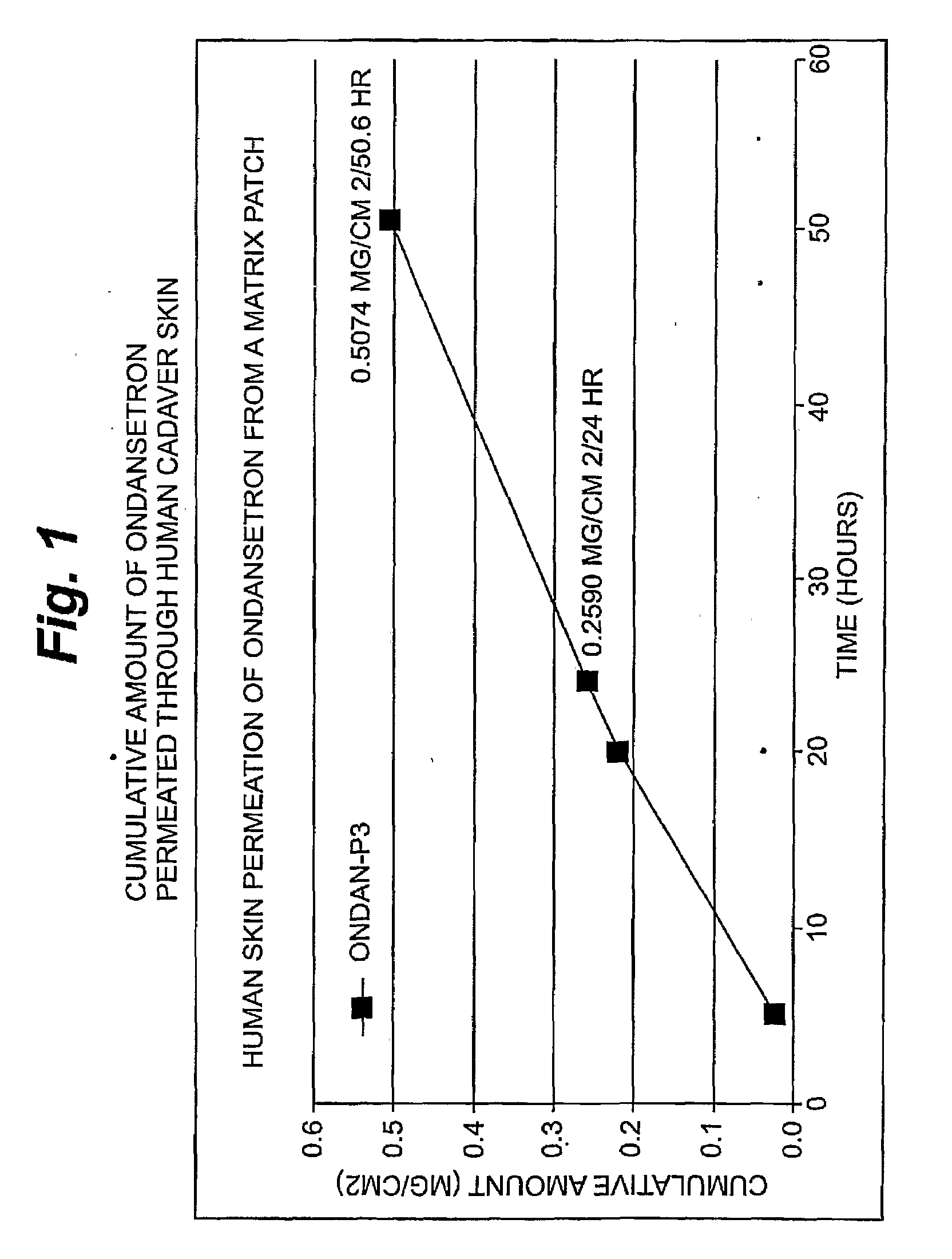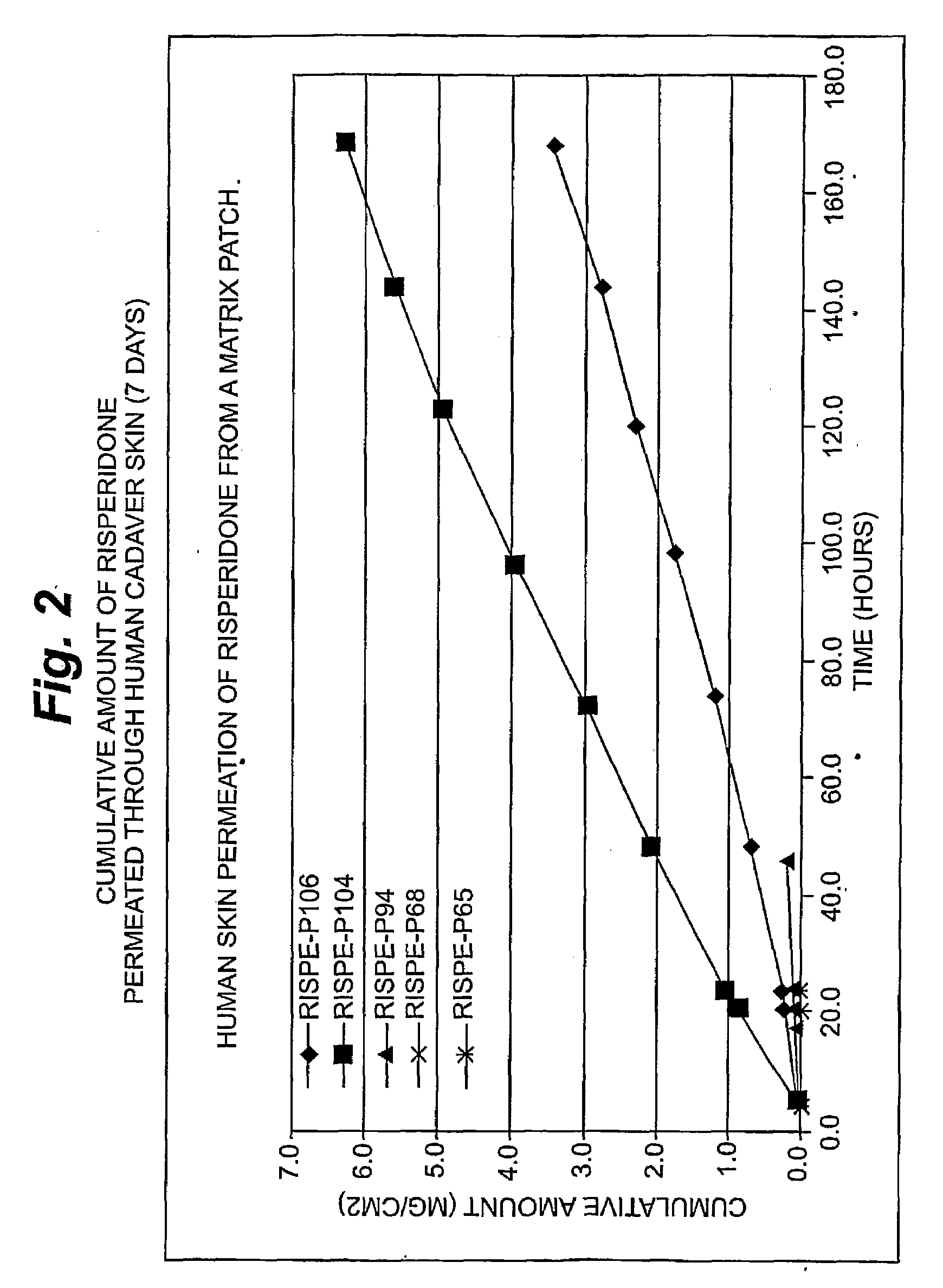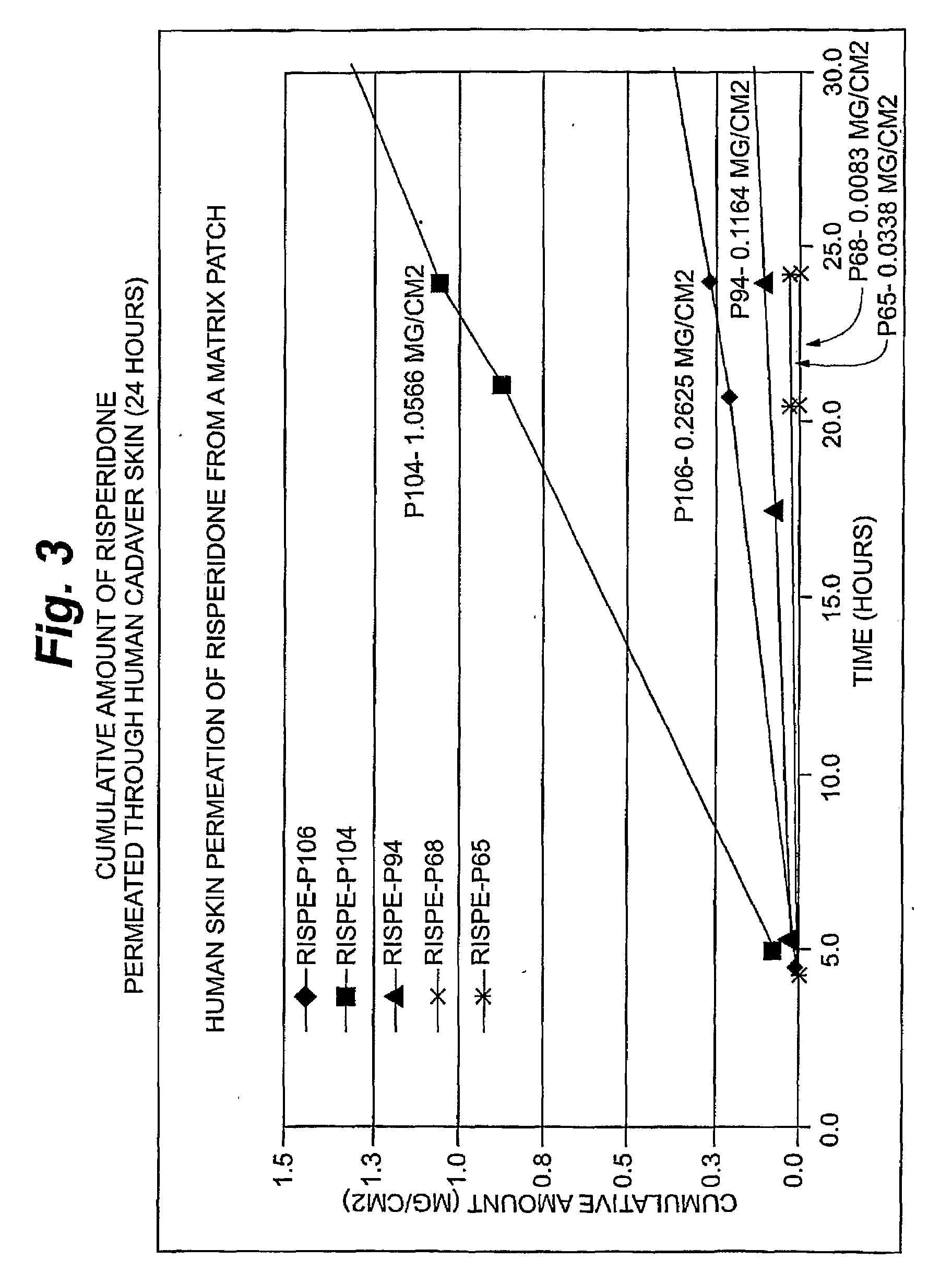Transdermal Delivery of Hydrophobic Bioactive Agents
a bioactive agent and transdermal technology, applied in the direction of biocide, bandages, heterocyclic compound active ingredients, etc., can solve the problems of hydrophobic drugs being particularly difficult to deliver transdermally, small number of drugs successfully commercialized in transdermal delivery, and limited number of drugs that can be administered using conventional patches, etc., to enhance the permeation of bioactive agents through human skin and improve the solubility of bioactive agents
- Summary
- Abstract
- Description
- Claims
- Application Information
AI Technical Summary
Benefits of technology
Problems solved by technology
Method used
Image
Examples
example 1
[0095]Ondansetron Permeation
[0096]An in vitro skin permeation study was conducted using one ondansetron transdermal patch. The formulations used to prepare these systems are listed in Table 1, which includes weight and percent weight of each component of the dried formulations. Each component was added in the order listed in Table 1. “PVPP’ refers to a commercially available polyvinyl polypyrrolidone powder, which was added in an amount sufficient to balance the liquid nature of other solubizing agents in order to maintain the physical integrity of the patch. Other suitable and generally inert powders that can be used will become apparent to those skilled in the art, given the present description. “Duratak” is a tradename and refers to a commercially available polyisobutylene adhesive liquid available from National Starch and Chemical.
[0097]Each formulation was coated on a release liner and dried in an oven at 65° C. for two hours to remove water and other solvents. The dried drug-i...
example 2
[0099]Risperidone Permeation
[0100]An in vitro skin permeation study was conducted using five risperidone transdermal patches. The formulations used to prepare these systems are listed in Table 2, which includes weight and percent weight of each component of the dried formulations. Each component was added in the order listed in Table 2. Each formulation was coated on a release liner and dried in an oven at 65° C. for two hours to remove water and other solvents. The dried drug-in-adhesive / release liner film was laminated to a backing film. The backing / drug-in-adhesive / release liner laminate was then cut into discs with a diameter of 9 / 16 inch.
[0101]The in vitro permeation of risperidone through human cadaver skin from these discs was performed using Franz diffusion cells with a diffusion area of 1 cm2 and a receiver solution capacity of 8 ml. Human cadaver skin was cut to a proper size and placed on a flat surface with the stratum corneum side facing up. The release liner was peeled...
example 3
[0103]Levonorgestrel Permeation
[0104]An in vitro skin permeation study was conducted using four levonorgestrel transdermal patches. The formulations used to prepare these systems are listed in Table 3, which includes weight and percent weight of each component of the dried formulations. Each component was added in the order listed in Table 3. Each formulation was coated on a release liner and dried in an oven at 65° C. for two hours to remove water and other solvents. The dried drug-in-adhesive / release liner film was laminated to a backing film. The backing / drug-in-adhesive / release liner laminate was then cut into discs with a diameter of 9 / 16 inch.
[0105]The in vitro permeation of levonorgestrel through human cadaver skin from these discs was performed using Franz diffusion cells with a diffusion area of 1 cm2 and a receiver solution capacity of 8 ml. Human cadaver skin was cut to a proper size and placed on a flat surface with the stratum corneum side facing up. The release liner w...
PUM
| Property | Measurement | Unit |
|---|---|---|
| skin temperature | aaaaa | aaaaa |
| area | aaaaa | aaaaa |
| area | aaaaa | aaaaa |
Abstract
Description
Claims
Application Information
 Login to View More
Login to View More - R&D
- Intellectual Property
- Life Sciences
- Materials
- Tech Scout
- Unparalleled Data Quality
- Higher Quality Content
- 60% Fewer Hallucinations
Browse by: Latest US Patents, China's latest patents, Technical Efficacy Thesaurus, Application Domain, Technology Topic, Popular Technical Reports.
© 2025 PatSnap. All rights reserved.Legal|Privacy policy|Modern Slavery Act Transparency Statement|Sitemap|About US| Contact US: help@patsnap.com



